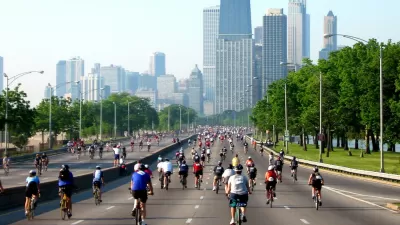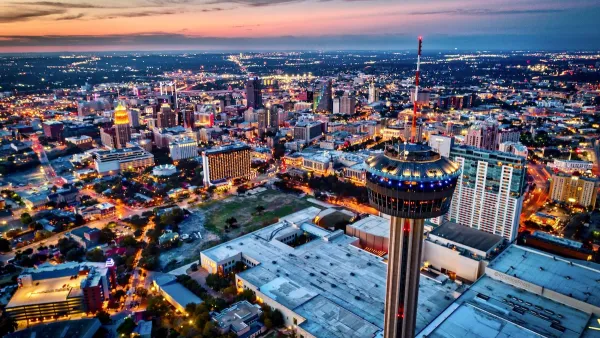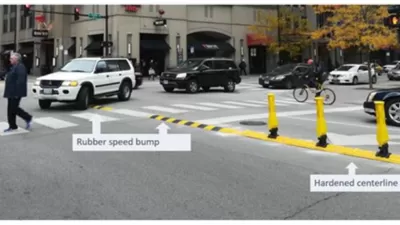Chicago is following in the footsteps of cities around the country (a few years behind the pack) in adopting a Vision Zero plan to eliminate traffic deaths and serious injuries by 2026.

John Greenfield reports on the city of Chicago's announcement this week of a Vision Zero plan to eliminate traffic deaths and serious injuries by 2026. The plan's delivery is slightly overdue, after the Rahm Administration promised the plan in fall of 2016, but Greenfield writes "[that] the important thing is that Chicago is finally getting moving on this crucial mission to reduce the carnage on our streets, where currently dozens of people are injured in crashes every day, and more than 100 people are killed in collisions each year."
Greenfield's analysis first approaches the Vision Zero plan from the angle of equity. "As I’ve discussed before, since the Vision Zero efforts will be focused on these High Crash Areas, which are largely lower-income communities of color, it’s important that any increase in traffic enforcement be done in an equitable way," writes Greenfield. The city already has a problem with giving a disproportionate number of tickets for bike infractions to Black residents of the city, as a March report revealed.
As for the capital investment components included in the plan, Greenfield reports:
Under the three-year plan, CDOT plans to improve 300 intersections to make them safer for pedestrians. CDOT will also work with the CTA to improve access and safety at 25 stations, encouraging the use of transit through targeted safety improvements in the vicinity of CTA stations and bus stops, particularly in high crash zones.
Mary Wisniewski also reports on the new Vision Zero plan in a separate article for the Chicago Tribune.
FULL STORY: At Long Last, the City Releases the Chicago Vision Zero Action Plan

Planetizen Federal Action Tracker
A weekly monitor of how Trump’s orders and actions are impacting planners and planning in America.

Chicago’s Ghost Rails
Just beneath the surface of the modern city lie the remnants of its expansive early 20th-century streetcar system.

San Antonio and Austin are Fusing Into one Massive Megaregion
The region spanning the two central Texas cities is growing fast, posing challenges for local infrastructure and water supplies.

Since Zion's Shuttles Went Electric “The Smog is Gone”
Visitors to Zion National Park can enjoy the canyon via the nation’s first fully electric park shuttle system.

Trump Distributing DOT Safety Funds at 1/10 Rate of Biden
Funds for Safe Streets and other transportation safety and equity programs are being held up by administrative reviews and conflicts with the Trump administration’s priorities.

German Cities Subsidize Taxis for Women Amid Wave of Violence
Free or low-cost taxi rides can help women navigate cities more safely, but critics say the programs don't address the root causes of violence against women.
Urban Design for Planners 1: Software Tools
This six-course series explores essential urban design concepts using open source software and equips planners with the tools they need to participate fully in the urban design process.
Planning for Universal Design
Learn the tools for implementing Universal Design in planning regulations.
planning NEXT
Appalachian Highlands Housing Partners
Mpact (founded as Rail~Volution)
City of Camden Redevelopment Agency
City of Astoria
City of Portland
City of Laramie





























